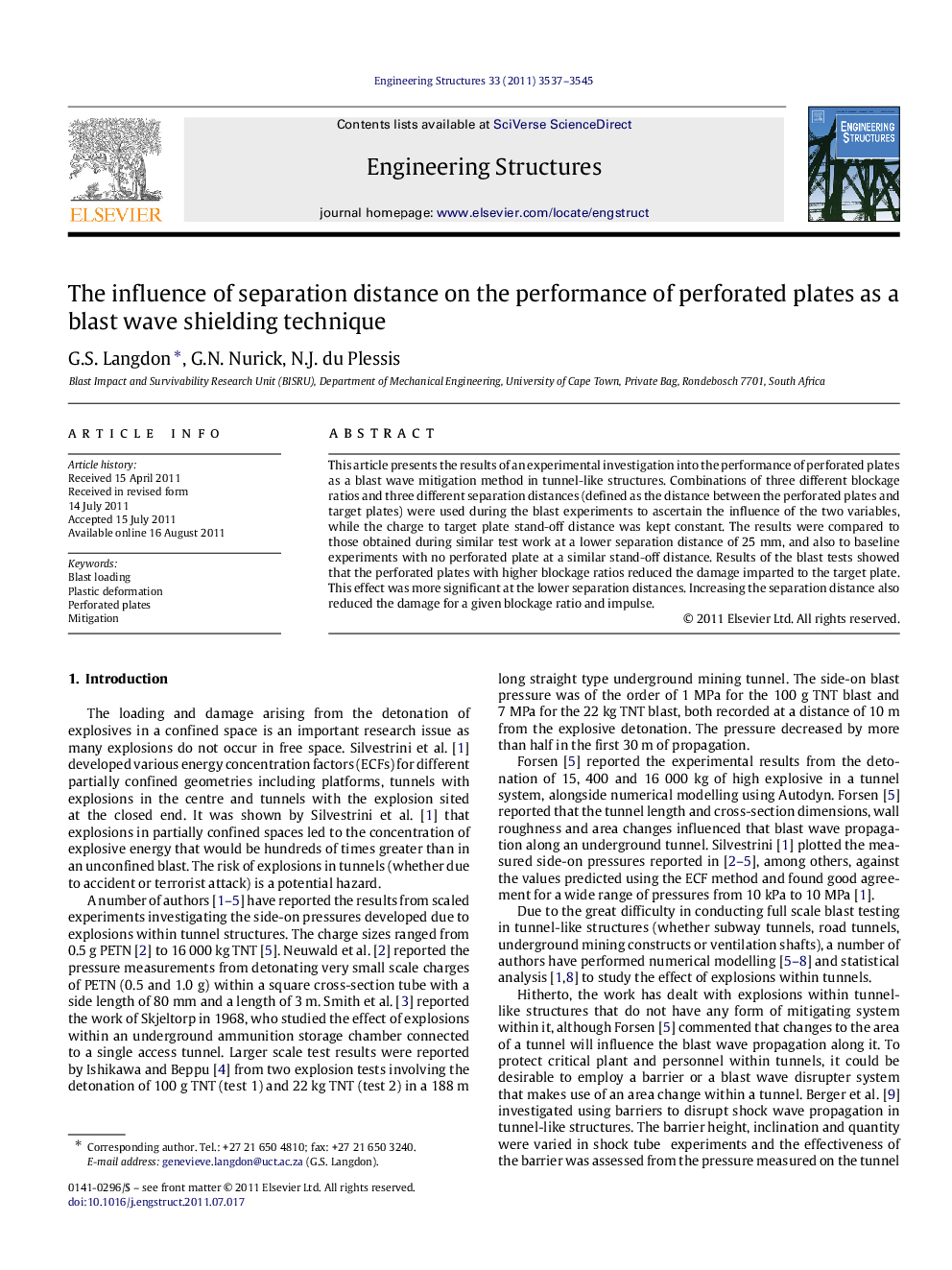| Article ID | Journal | Published Year | Pages | File Type |
|---|---|---|---|---|
| 268057 | Engineering Structures | 2011 | 9 Pages |
This article presents the results of an experimental investigation into the performance of perforated plates as a blast wave mitigation method in tunnel-like structures. Combinations of three different blockage ratios and three different separation distances (defined as the distance between the perforated plates and target plates) were used during the blast experiments to ascertain the influence of the two variables, while the charge to target plate stand-off distance was kept constant. The results were compared to those obtained during similar test work at a lower separation distance of 25 mm, and also to baseline experiments with no perforated plate at a similar stand-off distance. Results of the blast tests showed that the perforated plates with higher blockage ratios reduced the damage imparted to the target plate. This effect was more significant at the lower separation distances. Increasing the separation distance also reduced the damage for a given blockage ratio and impulse.
► Blast loading experiments on tunnel-like structures. ► Nine blockage/separation distance combinations with constant stand-off distance. ► 50% blockage ratio provided no benefit. ► Increasing separation distance improved mitigation. ► 89% blockage ratio/150 mm separation distance was best and reduced damage by 65%.
